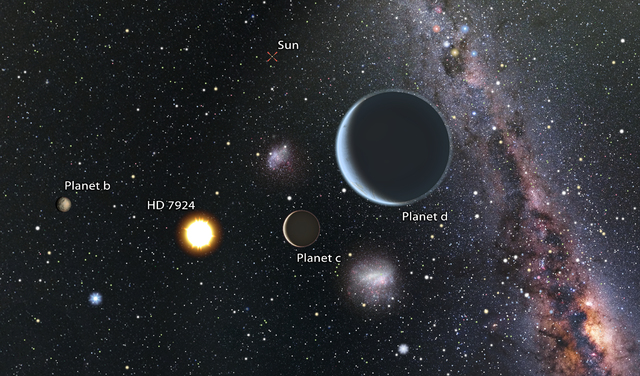A team of astronomers using ground-based telescopes on the Big Island, California and Arizona recently discovered a planetary system orbiting a nearby star that is only 54 light-years away. ADVERTISING A team of astronomers using ground-based telescopes on the Big
A team of astronomers using ground-based telescopes on the Big Island, California and Arizona recently discovered a planetary system orbiting a nearby star that is only 54 light-years away.
All three “super-Earths” orbit their star at a distance closer than Mercury orbits the sun, completing their orbits in just 5, 15 and 24 days.
Astronomers from the University of Hawaii at Manoa, the University of California, Berkeley, and other institutions found the planets using measurements from the W.M. Keck Observatory on Mauna Kea, the Lick Observatory in California, and the Fairborn Observatory in Arizona.
The team discovered the new planets by detecting the wobble of the star HD 7924 as the planets orbited and pulled on the star gravitationally.
The Keck Observatory found the first evidence of planets orbiting HD 7924, discovering the innermost planet in 2009 using the HIRES instrument installed on the 10-meter Keck I telescope.
This discovery shows the type of planetary system that astronomers expect to find around many nearby stars in the coming years, scientists said.
“The three planets are unlike anything in our solar system, with masses 7-8 times the mass of Earth and orbits that take them very close to their host star,” said UC Berkeley graduate student Lauren Weiss.
See Wednesday’s Tribune-Herald for more on this story.




